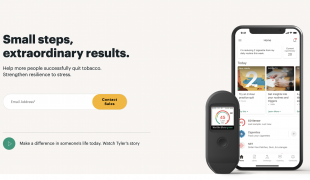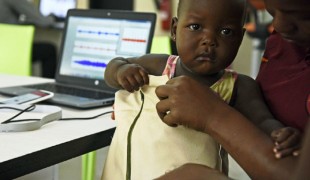- 3520
- 312
- 5
- 13
- 0
- Help Ukraine
About the solution
Maya Varma, at the time a high school student, came up with the idea of inventing a medical device after witnessing a close friend having a severe asthma attack, while at summer camp. Her friend was taken to the hospital and recovered, and after that, Maya started asking questions about asthma and discovered that a device called a spirometer was used to treat people with the same disease as her friend.
A spirometer is an apparatus for measuring the volume of air inspired and expired by the lungs. Maya didn't know this but, after inquiring more, she learned that this medical device typically costs hundreds of dollars and, as a result, it can be pretty rare in developing countries. And so, she decided to design her own model, one that was as effective in analyzing lung conditions, but considerably cheaper.
Throughout her research on spirometers, Varma learned that their high cost is a big barrier to the treatment of chronic obstructive pulmonary disease (COPD), the fourth leading cause of death around the world and a condition for which early detection is critical. This is where Maya's spirometer is different as it is able to diagnose five different respiratory illnesses- COPD, asthma, emphysema, chronic bronchitis, and restrictive lung disease for a fraction of the price.
Her medical device has three main components: the shell, the sensor, and the app. The first one, made on a 3D printer is for, when a person breaths into the shell, the rate of the airflow is measured by a pressure sensor as his/her breath passes through a fine, stainless steel mesh. The second one converts the pressure change to digital data, which is monitored by a microcontroller and transmitted through Bluetooth to a mobile app that Maya created. Finally, the app computes lung performance and illustrates it on the person's smartphone, taking into account his/her age, gender, weight, and other factors. It also has a disease management tool that allows patients to record their symptoms, and test results and track the severity of their illness.
The result? A device that cost her only 35$ to build and can diagnose five different lung diseases is already paying dividends. In 2016, for this invention, Maya Varma won 150,000$ as one of the first-place winners in the prestigious Intel Science Talent Search competition.
This device is currently being developed, as it only has, at this time, a prototype.
This story was adapted from https://www.washingtonpost.com/news/education/wp/2016/03/16/meet-the-tee...
This solution shall not include mention to the use of drugs, chemicals or biologicals (including food); invasive devices; offensive, commercial or inherently dangerous content. This solution was not medically validated. Proceed with caution! If you have any doubts, please consult with a health professional.
-
-
661
-
0
-
9753

Patient develops wearable for Asthma
VENTILATION
CAREGIVING
Asthma
Assistive Daily Life Device (to help ADL)
Treatment/Surgical device
App (Including when connected with wearable)
Pharma
Improving respiratory function
Promoting self-management
Manage Medication
Preserving Organ Function
To implement a diagnostic tool
Alleviating Allergies
To improve Treatment/Therapy
Preventing (Vaccination, Protection, Falls, Research/Mapping)
Caregiving Support
General and Family Medicine
Immuno-allergology
Pneumology
Australia
-
-
-
328
-
0
-
3320

David Utley a former smoker created - Pivot - breath sensor and companion app to help quit smoking.
-
-
-
589
-
0
-
8632

Smart jacket to help diagnose Pneumonia
VENTILATION
CAREGIVING
Pneumonia
Body-Worn solutions (Clothing, accessories, shoes, sensors...)
App (Including when connected with wearable)
To implement medical examination
Preserving Organ Function
To implement a diagnostic tool
Preventing (Vaccination, Protection, Falls, Research/Mapping)
Pediatrics
Pneumology
Uganda
-
 en
en